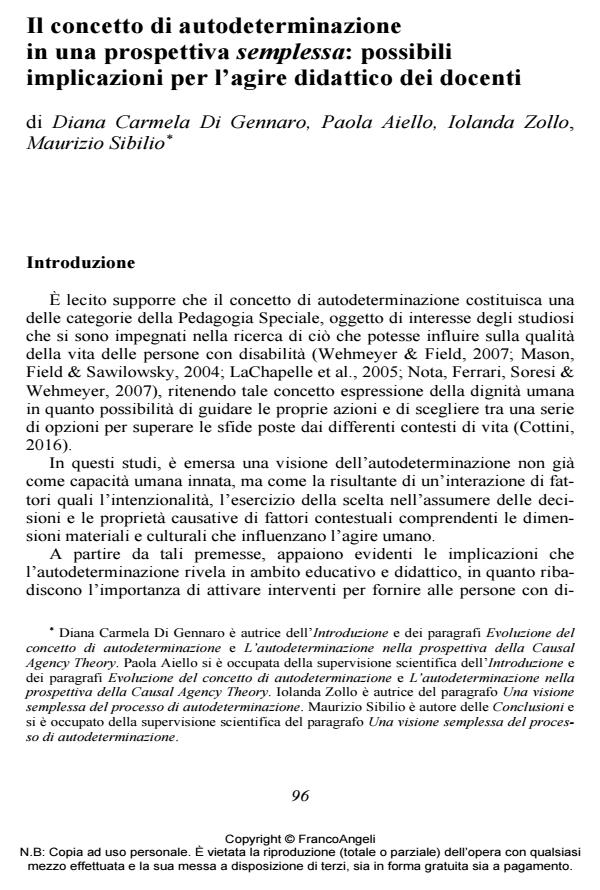The concept of self-determination within a simplex perspective: possible implications for teachers’ action
Journal title EDUCATIONAL REFLECTIVE PRACTICES
Author/s Diana Carmela Di Gennaro, Paola Aiello, Iolanda Zollo, Maurizio Sibilio
Publishing Year 2017 Issue 2017/1
Language Italian Pages 14 P. 96-109 File size 209 KB
DOI 10.3280/ERP2017-001007
DOI is like a bar code for intellectual property: to have more infomation
click here
Below, you can see the article first page
If you want to buy this article in PDF format, you can do it, following the instructions to buy download credits

FrancoAngeli is member of Publishers International Linking Association, Inc (PILA), a not-for-profit association which run the CrossRef service enabling links to and from online scholarly content.
The article aims at offering a possible transdisciplinary interpretation of the concept of self-determination, which can be considered a category in Special Pedagogy and which has interesting implications in relation to the cognitive selfregulating mechanisms underlying the teachers’ actions. Starting from the meanings of the concept within the different research fields, the work proposes an analysis of self-determination within the Causal Agency Theory by highlighting its possible implications in the teaching-learning process. This, indeed, could be considered a cognitive possibility ruled by the principles and the properties of simplexity within an ecological-systemic view that links teaching action with students’ academic achievement.
- Teacher agency for inclusion: a study on the attitudes of pre-service support teachers Catia Giaconi, Ilaria D’Angelo, Tina Marcoionni, Tommaso Santilli, Lucia Borsini, in The Australian Educational Researcher /2025 pp.4221
DOI: 10.1007/s13384-025-00895-5
Diana Carmela Di Gennaro, Paola Aiello, Iolanda Zollo, Maurizio Sibilio, Il concetto di autodeterminazione in una prospettiva semplessa: possibili implicazioni per l’agire didattico dei docenti in "EDUCATIONAL REFLECTIVE PRACTICES" 1/2017, pp 96-109, DOI: 10.3280/ERP2017-001007